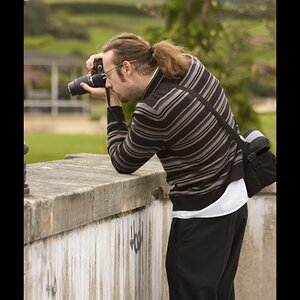MichiganFarts
TPF Noob!
- Joined
- Dec 22, 2010
- Messages
- 515
- Reaction score
- 41
- Location
- Northern Michigan
- Can others edit my Photos
- Photos NOT OK to edit
Here's a term I haven't really heard since I was in high school taking photography classes.
I don't hear it at work, where the concept would be highly useful.
I don't ever remember hearing it here, on TPF.
From what I remember, it was used to judge what would be acceptable quality, for the size of a print. If your photo measures 'x', you should be viewing from 'x' distance.
Is there a chart for this, or a known standard? And how does this come into play, when viewing images larger, than say 4" x 6" on your monitor? Should you sit back in your chair, or zoom out from your image to an acceptable viewing distance before you decide to judge whether or not certain aspects are good?
And not just from a quality aspect, but from any or all technical aspects. Such as, possibly, distracting elements in a photo, that you may not see if you're another foot away from the photo.
In short: Do we at times have our noses too close to our wide-screen monitors when judging a photo?
I don't hear it at work, where the concept would be highly useful.
I don't ever remember hearing it here, on TPF.
From what I remember, it was used to judge what would be acceptable quality, for the size of a print. If your photo measures 'x', you should be viewing from 'x' distance.
Is there a chart for this, or a known standard? And how does this come into play, when viewing images larger, than say 4" x 6" on your monitor? Should you sit back in your chair, or zoom out from your image to an acceptable viewing distance before you decide to judge whether or not certain aspects are good?
And not just from a quality aspect, but from any or all technical aspects. Such as, possibly, distracting elements in a photo, that you may not see if you're another foot away from the photo.
In short: Do we at times have our noses too close to our wide-screen monitors when judging a photo?
Last edited:


![[No title]](/data/xfmg/thumbnail/35/35955-01e9c8140cdcaac10d227d68e42ac0d4.jpg?1619737267)




![[No title]](/data/xfmg/thumbnail/41/41890-a5975e67f00dd9340fcf9dba8728a762.jpg?1619739933)

